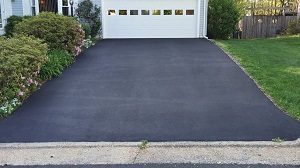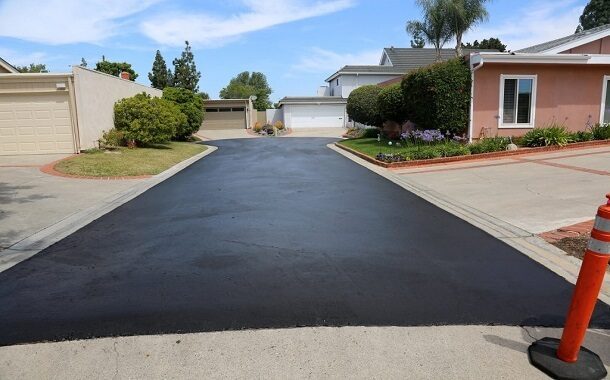Costs of Driveway Repaving and Resurfacing
Last Updated on February 21, 2024
Written by CPA Alec Pow | Content Reviewed by ![]() CFA Alexander Popinker
CFA Alexander Popinker
Your house is the place where you want to feel comfortable and enjoy every day with your loved ones. For your small universe to be as you have always dreamed, the look of the outside space is very important, because the first thing you notice when you get home is the yard, with its alleys, the parking lot, and the garden that you worked so hard to create. A low-quality paving of the driveway spoils the whole thing and creates a cluttered image.
As the asphalt does not last forever, your driveway will begin to corrode and crack. Its surface will be affected and damaged by the harsh weather, UV rays, gas, salt, and oil. When these cracks become unesthetic or worst, unsafe, you have to choose between repaving or resurfacing the driveway.
How much does it cost to repave a driveway compared to resurfacing it?
Compared to resurfacing, repaving is more expensive as this job requires much more labor, materials, and time. In general, the price is at least one-third more than the resurfacing price, if not double. However, you should budget anywhere between $5,500 and $10,500 for repaving.
The repaving cost is influenced by several factors such as the condition of your driveway, the local competition, and the place you are living. In terms of per square foot prices, you should expect to pay anywhere between $1.5 and $2.5. So, if you want to resurface a driveway of 2,000 square feet you should budget anywhere between $3,000 and $5,000.
Repaving overview
The repaving process involves more labor work and materials compared to resurfacing. You will have to remove the old asphalt and begin from scratch.
So, you will have to hire a professional to come and dig up all of the old asphalt from the driveway. After that, to ensure an even base, the soil below is filled, graded, and leveled. As a next step, above the soil, a new layer of gravel will be placed and compacted. Finally, the asphalt is laid.
You might also like our articles about the cost of a driveway security gate, a concrete driveway, or to widen a driveway.
As a rule of thumb, the damage would be considered too high for resurfacing if half to three-quarters of your driveway is cracked. In most cases, the main cause of the problem is uneven gravel or soil, and this can not going to be solved through resurfacing.
Resurfacing overview
Compared to repaving, the resurfacing process is simpler and faster. Practically, you just put a new asphalt driveway over the last one.
First of all, you will have to create an even base by filling any existing cracks. After that, an asphalt layer with a thickness of anywhere between 1.5 inches and 3 inches will be applied. As a final step, the new layer is flattened and smoothed with a heavy rolling machine.
 It is important to know the difference between resurfacing and resealing and not to confuse them. Resealing is the process of applying a protective coating to the asphalt. This is a preventative measure taken to prolong the life of your asphalt by protecting it from external factors.
It is important to know the difference between resurfacing and resealing and not to confuse them. Resealing is the process of applying a protective coating to the asphalt. This is a preventative measure taken to prolong the life of your asphalt by protecting it from external factors.
Damage to the driveways is mainly caused by water entering the asphalt and expanding while it freezes, especially when using salt and sand as a non-slip. Thus, the asphalt connections are broken, which causes exfoliation, erosion, crushing, and cracking. Sealing the asphalt reduces the amount of water that is absorbed. The application of the protective coating can be carried out only after 21-30 days from the pouring of the concrete, the interval being necessary for drying. It is also necessary to sweep away any kind of debris: dust, mud, and leaves.
Grease or oil stains must also be removed with a pressure washer. Do not apply sealant if it has rained or you watered the asphalt in the last 24 hours. A garden sprayer, roller, or brush is used for this procedure. No special equipment is required. The sealant does not affect the plants or grass, but if it comes in contact with metal or glass (windows), it should be washed immediately with soap and water. The sealant dries in a maximum of 4 hours, but it is recommended to avoid cars entering the driveway for 24 hours.
However, resealing is not a solution if your driveway has to be repaired.
As a rule of thumb, you should choose to resurface if only around 25 percent of your driveway is damaged. You can probably wait for a while if it is damaged less than that. Though, you should consider resurfacing if the damage is really worse.


Leave a Reply
Want to join the discussion?Feel free to contribute!